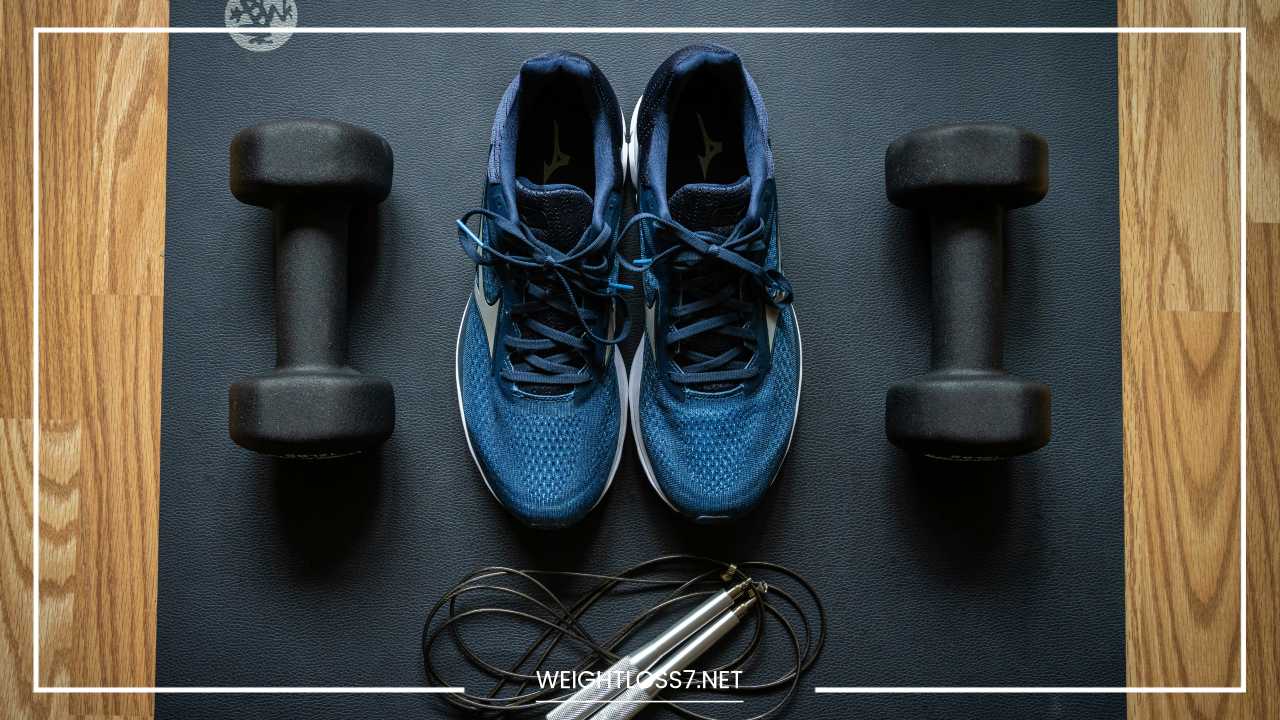Tips to Lose Weight: Practical Tips That Actually Work

Tips to Lose Weight
Shedding Pounds for a Healthier You: Practical Tips for Weight Loss
Weight loss. It’s a common aspiration for many, yet the path can feel like navigating a labyrinth. Crash diets, fleeting trends, and conflicting information bombard us, leaving us unsure where to begin. But fret no more!
This comprehensive guide equips you with practical strategies to achieve your weight loss goals in a healthy and sustainable manner.
Understanding Weight Loss: The Balancing Act
The cornerstone of weight loss lies in energy balance. Imagine your body as a bank account. You deposit calories through food and drinks, and you withdraw calories through physical activity.
To create a calorie deficit – the key to weight loss – you need to spend more energy than you consume.
Here’s a deeper dive into the factors influencing weight loss:
- Diet: This is your nutritional powerhouse. Focus on whole, unprocessed foods like fruits, vegetables, and lean proteins. They boast high fiber content, keeping you satiated for longer and reducing calorie intake. Think colorful – a vibrant plate is not only visually appealing but also nutritionally diverse.
- Exercise: It’s a calorie-burning powerhouse that also builds muscle, which further revs up your metabolism. Aim for at least 150 minutes of moderate-intensity exercise per week, or 75 minutes of vigorous-intensity exercise. Think brisk walking, swimming, cycling, dancing – anything that gets your heart rate up and keeps you moving.
- Sleep: When sleep-deprived, your body produces more ghrelin (the hunger hormone) and less leptin (the satiety hormone), leading to increased hunger and cravings. Aim for 7-8 hours of quality sleep each night to regulate your hormones and support weight loss efforts.
Dietary Strategies for Sustainable Success
Now, let’s delve into the nitty-gritty of healthy eating habits:
- Embrace Whole Foods: Ditch processed foods loaded with sugar, unhealthy fats, and refined carbohydrates. These are calorie-dense but nutrient-poor, leaving you feeling hungry and unsatisfied. Fill your plate with a rainbow of fruits and vegetables, complex carbohydrates like whole grains and legumes, and lean protein sources like fish, poultry, and beans. These nutrient-rich powerhouses keep you satiated and energized while providing your body with the essential building blocks it needs to function optimally.
- Portion Control is Key: Don’t underestimate the power of portion sizes! Invest in measuring cups and spoons, or use your hand as a handy reference. A palm-sized serving is about the right amount for protein, and a cupped hand represents a good portion of fruits and vegetables. Don’t be afraid to customize portion sizes based on your individual needs and activity level.
- Beware of Liquid Calories: Sugary drinks like soda, juices, and even some coffee drinks are calorie bombs in disguise. Swap them for water, your new best friend. Water keeps you hydrated, flushes out toxins, and can even aid in feeling full. Infuse your water with fruits, herbs, or cucumbers for a refreshing twist. Consider unsweetened tea or black coffee for a bit of variety.
- Read Food Labels Like a Pro: Become a label-reading detective! Pay close attention to serving sizes, calories, sugar content, and ingredients. Choose options lower in added sugars, saturated and unhealthy fats, and sodium. Look for foods rich in fiber and whole grains.
- Mindful Eating: Slow down and savor your food. Put away distractions like TV or your phone. Focus on the taste, texture, and aroma of your food. This allows your body to register fullness cues and prevents overeating. Chewing thoroughly also aids in digestion and nutrient absorption.
- Plan and Prep: Planning meals and prepping healthy snacks in advance prevents unhealthy choices when hunger strikes. Plan your grocery list around your meals and stock up on healthy options like pre-washed and chopped vegetables, frozen fruits, whole grains, and lean protein sources. Having healthy grab-and-go options readily available makes it easier to stay on track.
Exercise for Weight Loss and Overall Wellbeing
Physical activity is a vital component of a healthy weight loss plan. Here are some tips to get you moving and keep you moving:
- Find Activities You Enjoy: Exercise shouldn’t feel like a chore. Discover activities you genuinely find fun, whether it’s dancing to your favorite tunes, swimming laps in a pool, exploring nature on a hike, or playing a team sport with friends. When you enjoy your workouts, you’re more likely to stick with them in the long run.
- Start Slow and Gradually Increase Intensity: Don’t dive headfirst into intense workouts if you’re a fitness newbie. Begin with moderate-intensity exercises like brisk walking, cycling, or swimming. Gradually increase the duration and intensity of your workouts as your fitness improves. Listen to your body and take rest days to allow your muscles to recover and prevent injuries.
- Incorporate Strength Training: Building muscle mass is a game-changer for weight loss. Muscle burns more calories at rest, even when you’re not actively exercising. Include bodyweight exercises like squats, lunges, and push-ups, weightlifting routines with dumbbells or barbells, or resistance band workouts in your routine. Strength training not only helps with weight loss but also improves bone density, reduces the risk of injuries, and strengthens your overall physique.
- Make Activity Part of Your Daily Routine: Sneak in movement throughout your day. Take the stairs instead of the elevator, park farther away from your destination and walk the extra distance, do some jumping jacks or squats during commercial breaks while watching TV, or get a standing desk to burn a few extra calories while you work. Every bit of movement counts!
Developing Sustainable Habits for Long-Term Weight Management
Weight loss is a journey, not a destination. Here’s how to create sustainable habits that become second nature:
- Set Realistic Goals: Don’t aim for drastic weight loss overnight. Setting small, achievable goals like losing 1-2 pounds per week is more realistic and keeps you motivated. Celebrate your non-scale victories – increased energy levels, improved mood, better sleep, or clothes fitting more comfortably. These milestones are just as important as the number on the scale.
- Focus on Progress, Not Perfection: There will be setbacks. Don’t let them derail your journey. Everyone has occasional slip-ups. The key is to get back on track and learn from them. Forgive yourself, recommit to your goals, and keep moving forward.
- Find Your Support System: Surround yourself with positive and supportive people who encourage your healthy lifestyle choices. Consider joining a weight loss support group, working out with a friend, or talking to a registered dietitian or therapist for guidance and motivation. Having a support system can make a world of difference in your weight loss journey.
- Don’t Deprive Yourself: Restrictive diets are often unsustainable and can lead to cravings and binge eating. Allow yourself occasional treats in moderation. The key is to find a healthy balance. Enjoy a slice of cake at a birthday party or indulge in your favorite dessert on a special occasion. Deprivation can backfire, so listen to your body’s cravings and enjoy treats mindfully.
- Make it a Lifestyle Change: Weight loss shouldn’t be a temporary fix. Aim to adopt healthy habits that become an integral part of your lifestyle for lasting success. Think of it as an investment in your health and well-being. When you view healthy eating and exercise as a way to nourish your body and feel your best, it becomes more sustainable in the long run.
Additional Tips and Considerations
- Mind Your Stress Levels: Chronic stress can wreak havoc on your weight loss efforts. Stress hormones like cortisol can increase appetite and cravings. Practice stress management techniques like yoga, meditation, deep breathing exercises, or spending time in nature.
- Stay Hydrated: Drinking plenty of water is crucial for overall health and weight loss. Water helps flush out toxins, keeps you feeling full, and can even aid in digestion. Aim for 8 glasses of water per day, adjusting based on your activity level and climate.
- Cook More Meals at Home: This gives you control over the ingredients and portion sizes. Experiment with healthy recipes that are delicious and satisfying. Cooking at home allows you to tailor your meals to your dietary needs and preferences.
- Find a Registered Dietitian (RD): An RD can create a personalized meal plan based on your individual needs, goals, and health conditions. They can provide valuable guidance on healthy eating habits and portion control.
- Consult a Certified Personal Trainer (CPT): A CPT can design a safe and effective exercise program tailored to your fitness level and goals. They can also provide guidance on proper form and technique to prevent injuries.
Remember, you are not alone on this journey! There are many resources available to help you. Don’t hesitate to seek professional guidance from a registered dietitian, certified personal trainer, or your doctor. With dedication, perseverance, and the right tools, you can achieve your weight loss goals and live a healthier, happier life.

















